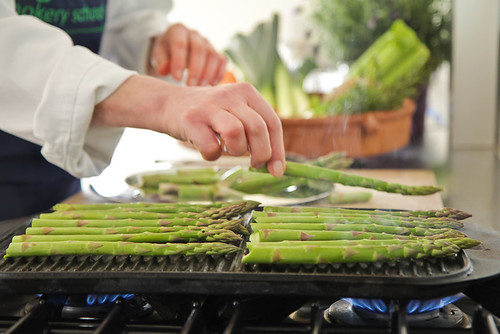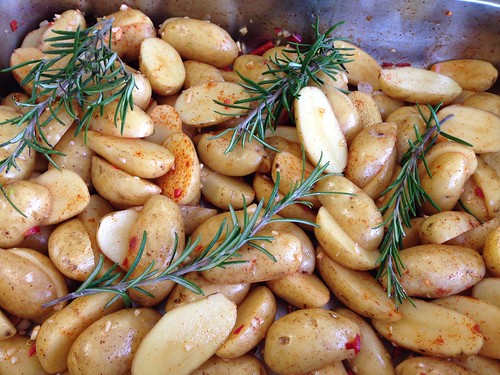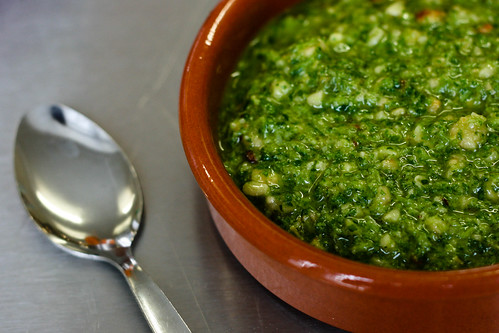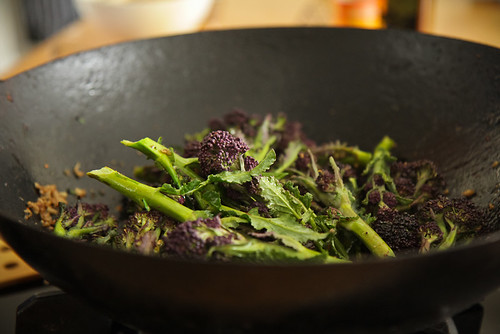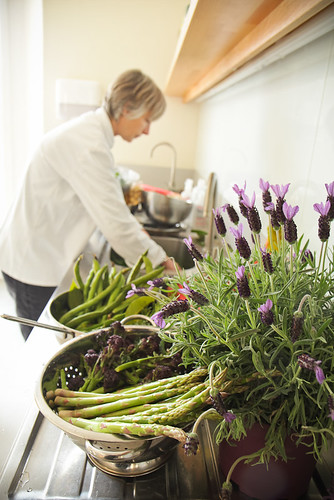Seasonal Recipes for Spring Veg
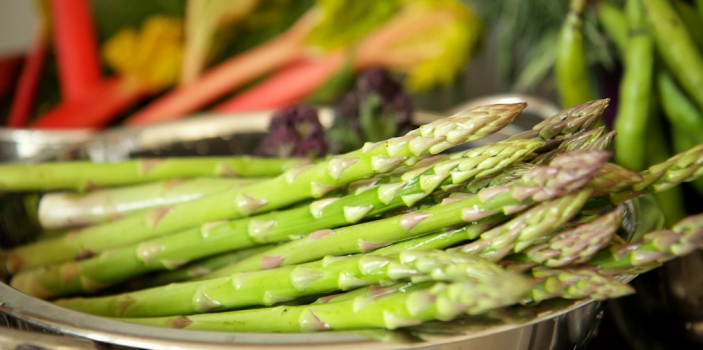
It's now spring! At the cookery school we're preparing for our Vegetarian Diploma course in two weeks. It will be prime time for spring produce, and we can't wait to turn fresh organic treasures into healthy satisfying meals with our students. So this week I wanted to write about some of the ingredients you'll see us talking about through April and May: asparagus, broad beans, new potatoes, watercress, and purple sprouting broccoli. Five vegetables with five recipes each - you should be set for your springtime five a day!
Asparagus
The asparagus season is short but plentiful with fat spears available from mid to late April until mid June. It signals the end of spring and the coming of summer and the beginning of the peak season of so many of our locally grown crops. To judge whether asparagus is fresh and good quality just look at the small bracts or special leaves, which grow just behind the tips. These should be well formed, lie flat along the stem, and not be shooting. The cut at the base of the spear should appear fresh and feel hard rather than spongy. This cut end is often tough and should be broken off before cooking, just bend the spear near the cut end and it will snap off crisply leaving the tender spears for your cooking. Don’t throw away the tougher ends. Add them to stocks and soups as they are full of flavour. Asparagus can be eaten as thin stalks, which are great for stir-fries and pasta, or as chunky spears, which can be simply grilled and served with a drizzle of olive oil.
- With Greek Greek Garlic and Almond Sauce
- Asparagus and Dolcelatte Tart
- Asparagus, Green Olive Tapenade and Goats Cheese Puff Tart
- Asparagus, Almond and Red Pepper Pasta
- Griddled Asparagus with Wilted Wild Garlic and Béarnaise Sauce
Broad Beans
Broad beans are the oldest variety of bean to be grown in Britain. They vary greatly in size, texture and taste as they mature. In late spring they are at their best. Small baby beans can be eaten raw, boiled or steamed for 1-2 minutes with or without the pod. Once the pods have exceeded 5-8cm the skin is no longer tasty and becomes fibrous and chewy.
When the pods are larger you need to pod the beans and it can be a surprise and a disappointment to reveal how few beans each pod contains. It is always worth buying more broad beans than you think you need as about ¾ of the weight is discarded once you have removed the pods. With young broad beans there should be no need to remove the skin of each individual bean but as the season progresses it is worth double shelling. To do this remove the beans from the pod, dunk into boiling water for 1-2 minutes and then pop the vibrant green kidney shaped beans out of their skins.
Broad beans are a natural companion to mint both in taste and in gardening as mint repels black fly.
- Asparagus, Pea, Broad Bean, and Goats Cheese Salad
- Turkish Pastries with Broad Beans
- Crushed Broad Beans with Curd Bruschetta
- Paella Verde
- Broad Bean Puree with Sheep’s Cheese
New Potatoes
New potatoes have a delicate taste and firm texture and don’t need to be peeled. Our favourite new potatoes are the kidney shaped Jerseys, and yellow Charlottes, Both have a waxy texture and are ideal for salads, which you should dress while the potatoes are still warm so they absorb the flavours.
It is best to buy new potatoes from Farmers Markets and greengrocers if you can. Try to buy unwashed potatoes, which last longer, but avoid the deception of sticking potting compost to new potatoes so you imagine they are freshly harvested. If you buy plastic bags of new potatoes always take them out of the plastic or they will soon rot. They are best stored in a cold, dark and airy place, but not the fridge, which tends to make potatoes taste too sweet.
- Patatas Bravas
- Tagine with Fennel, New Potato and Green Olives
- Fennel, New Potato, Radish and Watercress Salad
- Wild Garlic Soup
- Rasam
Watercress
The peppery vibrant green leaves of watercress awaken the taste buds and refresh the palate. This wild plant has been grown commercially in fast running water in the South of England since the 1800s and has been regarded since ancient times as a cleansing and nutritious food. Watercress is a good source of Vitamin C. It is delicious and distinctive in both hot and cold dishes; try it in soups, salad and sauces. Its taste goes particularly well with soft cheeses and feta. Watercress needs to be kept cool after it’s cut as it quickly loses its vibrancy and turns yellow.
- Watercress Roulade
- Beetroot, Apple and Watercress Salad with Horseradish Dressing
- Tempeh Goreng
- Vegan Pesto
- Watercress and Apple Smoothie [SmarterFitter]
Purple Sprouting Broccoli
Purple sprouting broccoli is one of the first crops of spring after over-wintering in the fields. Sprouting broccoli is either purple or green, but there is little difference between the two colours taste-wise. The purple variety becomes green on cooking. Sprouting broccoli is a real nutritional feast - just one serving contains your recommended daily amount of Vitamin C. It also has high levels of antioxidants, calcium, carotene and folate, which boost the immune system and helps cell regeneration.
Sprouting broccoli has been described as “Italian Asparagus” and can be treated in the same way, lightly steamed and served simply with aioli. Our favourite way of cooking sprouting broccoli is stir-frying. Try using a little sesame oil and sesame seeds. Mix with sesame coated tofu for a delicious supper. It also carries strong flavours well and in Roman kitchens was cooked with cumin, coriander, leeks, pinenuts and raisins. Never overcook sprouting broccoli as it becomes mushy, loses its colour and most of the peppery flavour.
- Purple Sprouting Broccoli and Wild Garlic
- Spring Herb Frittata
- Crispy Sesame Tofu
- Ginger and Chili Tofu with Purple Sprouting Broccoli [Heather Alford]
- Mediterranean Roasted Purple Sprouting Salad [Riverford]
Do let us know if you have any questions about spring veg,
either the ones we've mentioned here or others.
You can reach us in the comments below

